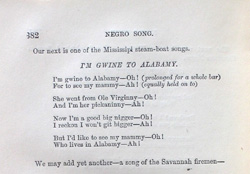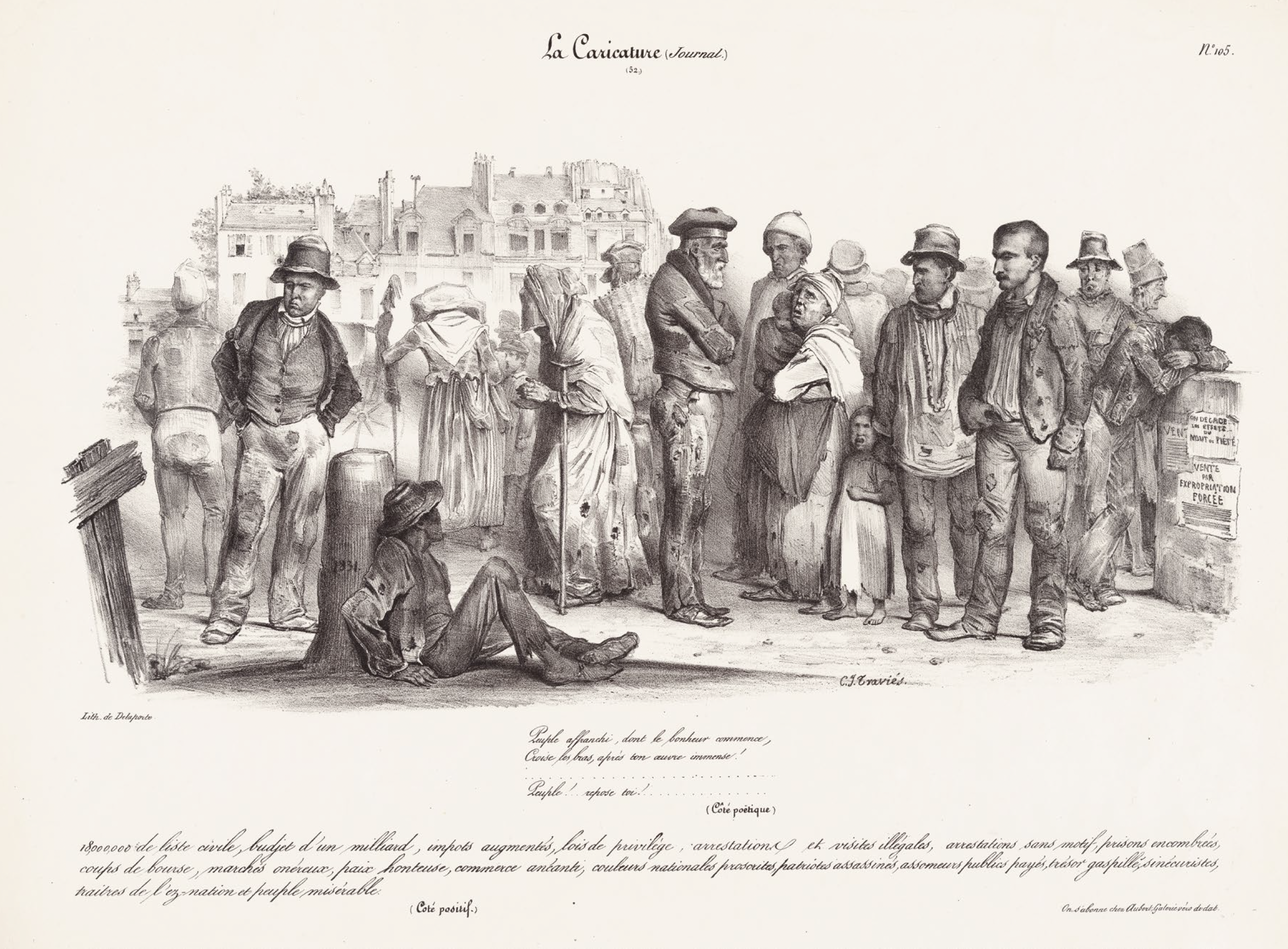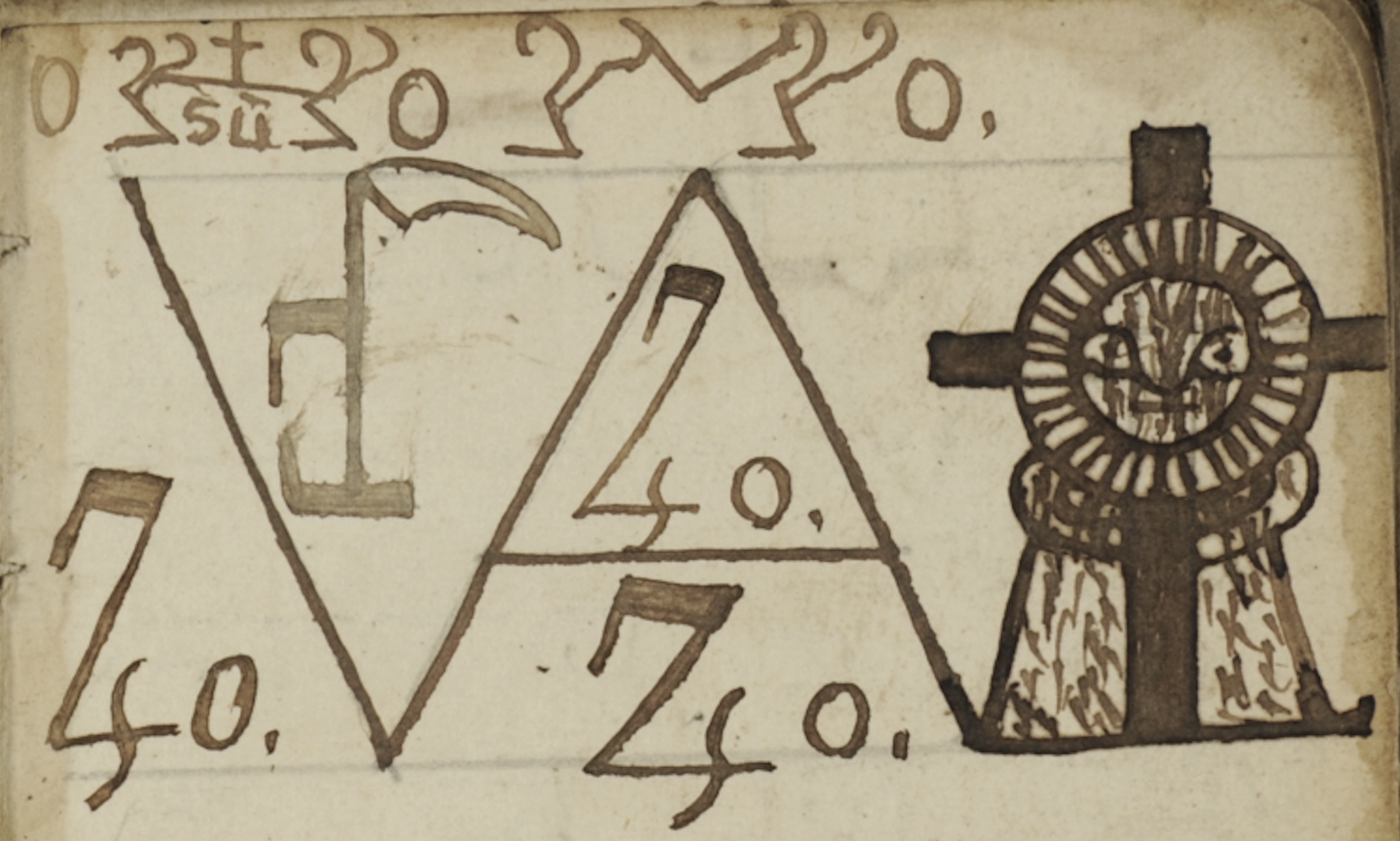Alexander Roob]
[April 26, 2013
Porter / Re-porter: Blake revisited (Exhibition)
In the exhibition Porter/Re-porter, on view from 4 May to 22 September in the frame of “Cube. Sparda Art Award” at the Kunstmuseum Stuttgart, Alexander Roob combines materials from the collection of the Melton Prior Institute with works of his own, including a longer excerpt from the eponymous CS drawing series created in London in fall of 2002 in cooperation with the daily The Guardian, as well as parts of “Theorie des Bildromans” from 1997.
The historical materials set in parallel direct the view back to the early age of cultural democratisation processes in early-19th-century England and some of their exponents in the milieu of philosophical radicalism and the first workers’ movement. The assisting role that art plays today in the on-going refeudalisation of society may have to do with the fact that this tensional, social-revolutionary phase is not present in the construction of art history, that in the frame of art, then, there is no awareness of complex artistic strategies stretching back in history to liberalise and democratise social systems.
William James Linton / John Thomas Smith
The Linton – Archiv on view
The central theme of the exhibition Porter/Re-porter and the accompanying brochure Anti-porter is the productive interrelationship between res publica and res privata in the artistic field, between social commitment and hermetic retreat, popular and cryptic modes of representation. The exhibition itinerary juxtaposes works of the style-forming godfather of political-interventionist art, the poet and xylograph William James Linton (1812–1897), with graphics by the inventor of investigative social reportage, the engraver and archaeologist of the present, John Thomas Smith (1766–1833).
John Thomas Smith: aus: “Remarks on Rural Scenery”, London 1797
John Thomas Smith: Lady Plomer´s Palace, from: Remarks on Rural Scenery, London 1797
W. J. Linton: Blake´s Cottage at Felpham, London 1863
What the two highly different socially related approaches share is a productive, antithetic relationship to the shuttered and withdrawn art of the republican burden-bearer-beer-drinker and door opener William Blake (1757–1827). In his illuminated poem Milton, which also plays a key role in the “Theorie des Bildromans”, Blake had analysed in a peculiarly introspective fashion the spatial and temporal constituents of reportage; moreover, he developed a myth of lineament by constructing a metaphysical precedence of the contour line over techniques of graphical tonality and thus paved the way for a debate that, decades later, would be carried out between his advocate Linton and proponents of micro-pointillistic, North American photo-xylography.
Alexander Roob, Theorie des Bildromans (Theory of the pictorial novel), 1997 (excerpt)
Henry Wolf: The Evening Star, 1896 (print from the destroyed block)
Henry Wolf: The Morning Star , 1903 (handsigned print from the destroyed block)
Adolph Menzel: Illustration for Heinrich von Kleist’s “Der Zerbrochene Krug (The Broken Jug)”, Berlin 1877 (Detail)
The publication Anti-porter approaches this early media debate via the backdoor of the exegesis of a colonialism-critical teaching play penned by Linton. The dialogue piece, “Cetewayo and Dean Stanley” from 1880, which is displayed rather en passant in the context of a large number of further exhibits from the Linton archive of the Melton Prior Institute, revolves in a deeper layer – this is the proposition – around a suppressed artistic and philosophical antipode of Blake, the founder of utilitarianism, Jeremy Bentham. In the context of the debate on graphical codes, he takes on the extreme, anti-medial position of self-identical image production. It is associated here with the Destroyed print series by the North American photo-xylographer Henry Wolf, created between 1896 and 1905, and the related, media-reflective woodcut illustrations by Adolph Menzel for the anniversary edition of Heinrich von Kleist’s “Der Zerbrochene Krug (The Broken Jug)” from 1877, which was also influential across the Atlantic.
Alexander Roob: “Anti-Porter” (Catalogue Cover), Stuttgart 2013
——————————————————————————————————————————
Linton- Life in the Collections: A selection in six showcases (Linklist)
I The London years (1812-1848)
1a -2 ) Richard Garnett: The Life of W.J. Fox, Public Teacher & Reformer 1786-1864. London 1910
1 a- 3) W. J. Linton: James Watson. A Memoir of the Days of the Fight for a Free Press in England and the Agitation for the People’s Charter. Manchester 1880
1 a-4) W. J. Linton (hrsg.): The National, A Library for the People. London 1839
1a – 5) Colonel W. Reid: An Attempt to Develop the Law of Storms. London. 1838 / 1846
1b-1) Joseph Mazzini: Italien, Österreich und der Papst. Ein Brief an Sir James Graham. Bern 1847
1b-2) John Leech & W.J. Linton: The Anti-Graham Envelope. London 1844 (Reprint: ca. 1890)
1b-3) William James Linton: The Jubilee of Trade. A Vision of the Nineteenth Century after Christ. London 1843 / ca. 1850
1b-4) W.J. Linton: Bob-Thin. A Poor Law Tale. London 1845
1b-5) Druckstock der Initiale M des menschlichen Alphabets in “Bob Thin”
1b-6) W.J. Linton: Bob-Thin or Poorhouse Fugitive. London 1845
2a-1) Douglas Jerrold (hrsg.): The Illuminated Magazine. Bd. I. London 1843
2a-2) W.J. Linton (hrsg.): The Illuminated Magazine. New series, Bd. I, London 1845
2a-4) Feargus O’Connor: A Practical Work on the Management of Small Farms. Manchester 1843 (6. Auflage, 1847)
2a-5) W.J. Linton: Bob-Thin or Poorhouse Fugitive. London 1845
———————————————————————————————————————
II The Brantwood Years (1849 – 1866)
2b-1) W.J. Linton: The Plaint of Freedom. Newcastle-upon-Tyne, 1852
2b-2) W. J. Linton: The English Republic. Every month. Price Six-Pence. London 1850
2b-3) W.J. Linton: (hrsg.): The English Republic. Leeds – London – Brantwood. 1850-55
2b-4) W.J. Linton (hrsg.): The English Republic. Vol. I, Leeds – London, 1850
2b-5) W.J. Linton (hrsg.): The English Republic. Vol. III, Brantwood, 1854
2b-6) W.J. Linton (hrsg.): The English Republic. Vol. III, Brantwood, 1854
2b-7) Kineton Parkes (hrsg.): William James Linton. The English Republic. London 1891
3 a) Harriet Martineau: The English Lakes. London – Windermere. 1858
3 a – 2) W.J. Linton: Lake Country Sketchbook. June 23 to July 18, 1863
3a-3) W.J. Linton: The Ferns of the English Lake Country. London 1865
3 a – 4) W.J. Linton: The Flower and the Star and other Stories for Children. Boston 1868
3a-5) John Ruskin: On the Nature of Gothic Architecture, and herein of the True Functions of the Workman in Art. London 1854
3b – 1) John Jackson / W.A. Chatto: A Treatise on Wood Engraving. London 1838 (zweite Auflage, 1861)
3b – 2) William James Linton: Specimens of a New Process Of Engraving for Surface-Printing, London 1861
3b – 3) Alexander Gilchrist: Life of William Blake, “Pictor Ignotus” 2 Vol. London 1863
3b- 4) W.J. Linton: Prägestempel mit keltischem Ornament. ca. 1865
3b – 5) W.J. Linton: Anzeige für „Claribel and other poems, by W.J. Linton“. o. D.
3b – 6) W.J. Linton: Claribel and Other Poems. London 1865
————————————————————————————————————-
III The North American Years (1866-1897)
4a- 1) W.J. Linton: Ireland for the Irish. Rhymes and Reasons against Landlordism. With a Preface on Fenianism and Republicanism. New York 1867
4a-2) S.H. Morse & J.B. Marvin (hrsg.): The Radical. The American Magazine of Natural Religion. Subscribers page. Boston / Mass., o. D.
4a-3) W.J. Linton: The Religion of Organization. An Essay read to Friends in Boston. New Haven 1869 / 1892
4a- 4) W.J. Linton: A REPUBLIC. The Meaning of the Word. o.D. (ca. 1869)
4a- 5) W.J. Linton: The House that Tweed built. Cambridge / Mass., Nov. 1871 (broschierte Version)
4a- 6) W.J. Linton: The House that Tweed built. Cambridge / Mass., Nov. 1871 (gebundene Ausgabe)
4b – 1) W.J. Linton aka Abel Reid and A.N. Broome: The American Odyssey. Adventures of Ulysses. exposed, in modest Hudibrastic Measure. Washington, 1876
4b – 2) W.J. Linton aka Abel Reid: Pot-Pourri. New York 1875
4b – 3) W.J. Linton: England To America 1876 A New -Years Greeting. Cambridge / MA, 1876
4b – 4) W.J. Linton: Famine: a Masque. New Haven 1875 / ca. 1887
4b – 5) William Cullen Bryant / W. J. Linton: Thanatopsis. New York 1874
4b – 6) William Cullen Bryant / W.J. Linton: The Flood of Years. New York 1877
5 a- 1) W.J. Linton aka Hattie Brown: Catoninetales. A domestic epic. Ausgabe Hamden, CT 1877
5a – 2) W.J. Linton: Druckstock für Catoninetales.
5a- 3) W.J. Linton aka Hattie Brown: Catoninetales. A domestic epic. Hamden, Ausgabe London – New York 1891
5a – 4) W.J. Linton: Umschlagentwurf für „Wind-Falls.“ (Bleistift, Aquarell). ca. 1875
5a – 5) W.J. Linton: Wind-Falls, Two Hundred And Odd. Hamden /CT, ca. 1876
5a – 6) W.J. Linton: Voices of the Dead. Charlotte Corday and Marat. Mazzini and the Countess Ossoli. Delescluze on the Barricade. Hamden /C, 1879
5a – 7) W.J. Linton: Cetewayo and Dean Stanley. Hamden / CT 1880
5a – 8) W.J. Linton aka A.W. of the Middle Temple, Gent: Heart Easings. Gent. (1595). reprinted liberatim from a copy, supposed unique, in the British Museum, 1824, Hamden / CT 1882
5 b – 1) W.J. Linton (hrsg.): Golden Apples of Hesperus (Poems not in the Collections), New Haven 1882
5 b – 2) W.J. Linton: To The Future / The Dirge Of The Nations. 1848 / 1849. Hamden / CT ca.1895
5b – 3) W. J. Linton (hrsg.): Poetry of America. Selections from One Hundred Poets from 1776 to 1876. With an introductory Review of Colonial Poetry and some Specimens of Negro Melody. London 1887
5b- 4) W.J. Linton: Love-Lore and other, early and late Poems, New Haven / CT 1895
5b – 5) W.J. Linton: Darwiniads Selected. Hamden / CT 1892
5b – 6) W.J. Linton: Times and Seasons. Hamden / CT 1894
5b – 7) W.J. Linton: Ultima Verba. Hamden 1895
6 – 1) W.J. Linton: Set mit Lintons Stecherwerkzeugen in originaler Verpackung
6 – 2) W.J. Linton: Wood- Engraving. A Manual of Instruction, New Haven, 1884
6 – 3) W.J. Linton: Some practical Hints on Wood Engraving, Boston 1879
Nachdem er wenige Monate zuvor eine Gruppe junger amerikanischer Fotoxylografen, die als New School of Wood Engraving Furore machten, in einem Zeitungsbeitrag heftig attackiert hatte, sah Linton sich von Seiten der amerikanischen Presse einer Front massiver Kritik ausgesetzt. Bei der Publikation, die wie ein xylografisches Lehrbuch daher kommt, handelt es sich um eine mit Polemiken gespickte Verteidigungsschrift.
6 – 4) William Abercrombie: A Scrapbook on Wood Engraving. Ashton upon Mersey, 1880 – 1899
6 – 5) W.J. Linton: The History of Wood Engraving in America, Boston, 1882
6 – 6) W.J. Linton: The Masters of Wood Engraving, Hamden / London, 1889
The publication of the series Graphism is funded with means from the Stiftung Kunstfonds.























































